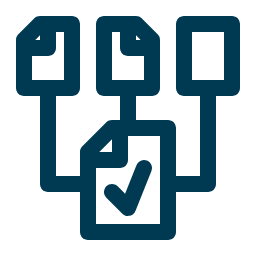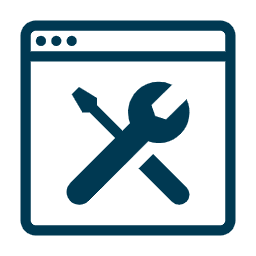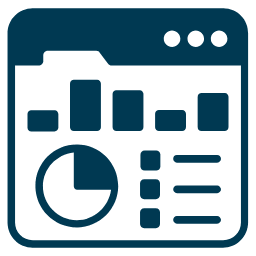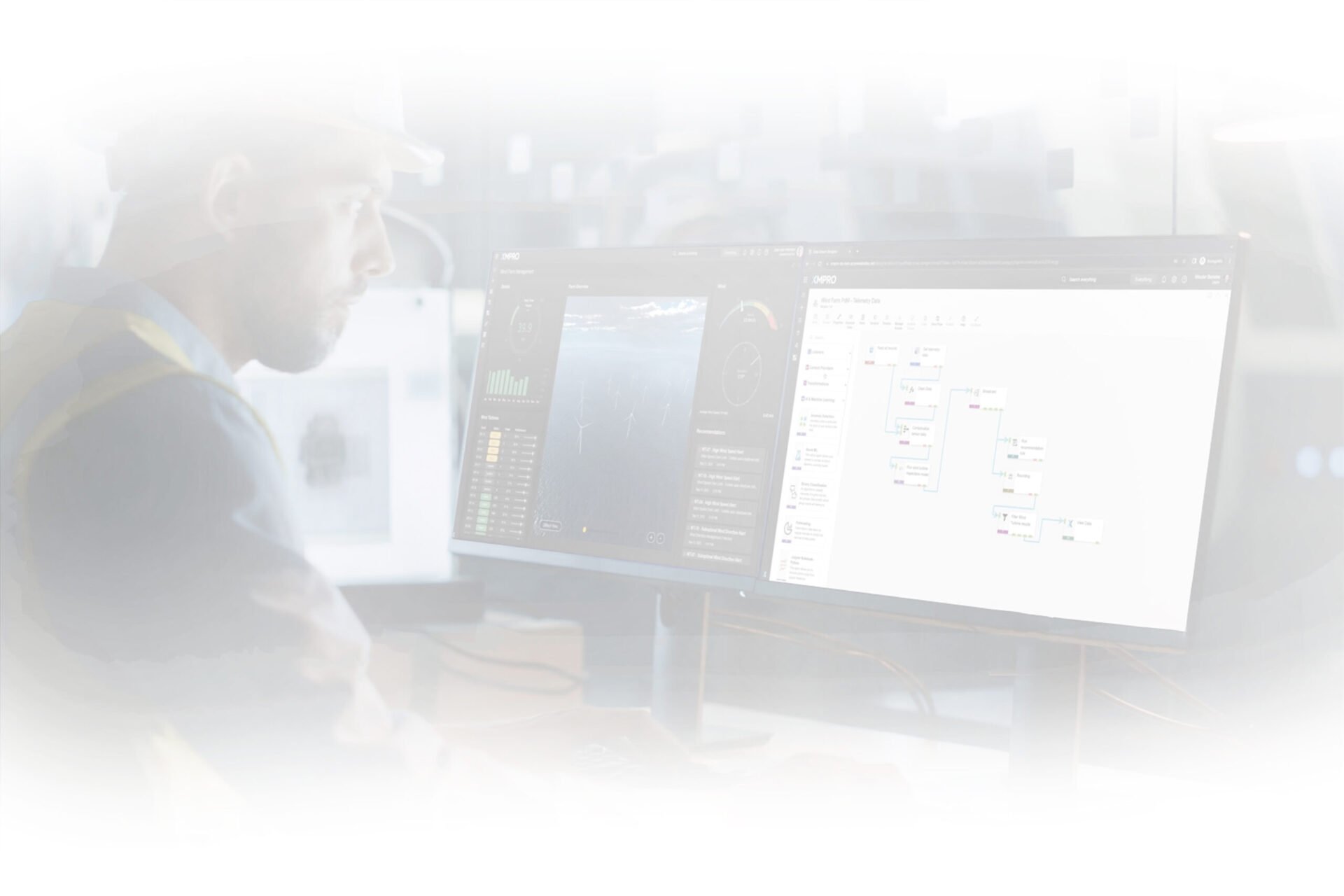Documentation
Get detailed guidance on platform features
Introduction In industrial sectors such as mining and mineral processing, cyclone and slurry pumps play a critical role in the transportation and separation of materials. These environments are notoriously harsh, with abrasive and corrosive substances posing significant challenges to equipment longevity and performance. To ensure efficient and reliable operations, advanced monitoring solutions are essential. XMPro’s Cyclone/Slurry Pump Monitoring Solution is designed to meet these demands, providing real-time insights and predictive analytics to optimize pump performance and minimize downtime.
The Challenge Cyclone and slurry pump operations face several challenges:
XMPro’s Cyclone/Slurry Pump Monitoring Solution effectively manages pump health in mining and wastewater treatment industries through advanced data integration, predictive analytics, and automated maintenance planning. The solution integrates real-time sensor data, historical maintenance records, and operational parameters using the Data Stream Designer to monitor pump performance. Machine learning algorithms predict potential pump failures, aiding proactive maintenance scheduling and resource allocation.
The system provides real-time monitoring of pump conditions, with alerts for operators and maintenance teams. It also coordinates maintenance efforts, including mobilizing crews, scheduling repairs, and managing spare parts inventory. Operational efficiency is enhanced with automated alerts and updates, while configurable dashboards and reporting features support comprehensive analysis and regulatory compliance. This data-driven approach ensures the efficiency and reliability of cyclone and slurry pump operations, addressing the unique challenges of these critical assets in demanding industrial environments.
Key Features

XMPRO’s Data Stream Designer lets you visually design the data flow and orchestration for your real-time applications. Our drag & drop connectors make it easy to bring in real-time data from a variety of sources, add contextual data from systems like EAM, apply native and third-party analytics and initiate actions based on events in your data.
Figure 1: Pump Health Condition Monitoring Data Stream This pump condition monitoring data stream ingests pump telemetry data before cleaning and broadcasting it to various endpoints. The data is contextualized with pump make, model, and operational context. It is then used to calculate pump metrics, post telemetry to ADX, update Azure Digital Twin, and evaluate recommendations.
Figure 2: Pump Predictive Maintenance Data Stream This pump predictive maintenance data stream ingests pressure, flow, temperature, vibration, and sensor health data from multiple sources before it is normalized and combined with contextual data from SAP and Azure Digital Twin. The integrated data is then used to calculate performance metrics, run predictive models, and update Azure Digital Twin and ADX, enabling the identification of pumps likely to fail and the estimation of their remaining useful life.
Figure 3: Example Pump Unity Model Data Stream
This pump unity model data stream ingests pump data to monitor and analyze pump conditions. The data is processed and combined with existing recommendations. It is then standardized, broadcasted, and evaluated through the unity pump model. The stream aggregates data by pump assets and stations, incorporates geographical context, and visualizes the data in single and chart formats. Finally, it runs recommendation logic to provide actionable insights for optimal pump performance and maintenance.

XMPRO Recommendations are advanced event alerts that combine alerts, actions, and monitoring. You can create recommendations based on business rules and AI logic to recommend the best next actions to take when a certain event happens. You can also monitor the actions against the outcomes they create to continuously improve your decision-making.
The XMPro App Designer is a no code event intelligence application development platform. It enables Subject Matter Experts (SMEs) to create and deploy real-time intelligent digital twins without programming. This means that SMEs can build apps in days or weeks without further overloading IT, enabling your organization to accelerate and scale your digital transformation.
Figure 1: Asset Analysis View with AI Copilot Assistance The Asset Analysis dashboard for Pump P78 illustrates the comprehensive monitoring capabilities of XMPro’s Cyclone/Slurry Pump Monitoring Solution. This dashboard provides real-time insights into the operational efficiency, availability, quality, and performance of critical pump assets. This comprehensive overview enables operators and maintenance teams to monitor pump performance effectively, identify potential issues early, and take corrective actions to maintain high operational standards and equipment reliability. By leveraging XMPro’s monitoring solution, clients can achieve greater efficiency, reliability, and cost savings, ultimately enhancing their competitive edge in harsh industrial environments.
Key Dashboard Features: Overall Equipment Effectiveness (OEE): Displays the OEE score of 70, highlighting a 12% increase, indicating improvements in equipment utilization.
Availability: Shows an availability score of 90, with a 2% decrease, providing insights into equipment uptime.
Quality: Indicates a quality score of 91, with a 1% decrease, ensuring the consistency of output quality.
Performance: Demonstrates a performance score of 95, with a 3% increase, reflecting the efficiency of the pump operations.
Pump Status and Details:
3D Model Visualization: An interactive 3D model of the pump provides a detailed view of the pump components, helping operators understand the internal structure and identify areas of concern.
AI Copilot Assistance: The AI Copilot lists common causes of discharge loss, such as clogged or blocked discharge lines, impeller wear, air or gas entrainment, incorrect pump sizing, and mechanical seal failure. This Provides actionable insights and recommendations to address these issues, enhancing the decision-making process for maintenance teams.
Actual vs Predicted RUL: A graph comparing the actual and predicted remaining useful life of the pump, allowing for proactive maintenance planning.
Figure 2: Pump Health Monitoring Drilldown
The Pump Health Monitoring dashboard provides a detailed drilldown into the operational status of Pump P78 within a surface processing plant. This dashboard leverages real-time data to ensure operational continuity and maintenance optimization, offering a comprehensive view of pump health and performance.
Key Dashboard Features:
Unity View of Pump: A detailed 3D model of the pump provides a comprehensive visual representation, aiding in understanding the pump’s internal structure and identifying areas that require attention.
Benefit: This detailed visualization facilitates quick diagnosis and precise maintenance planning, reducing downtime and maintenance costs.
Operational Parameters:
Tracking these parameters helps in managing operational costs and environmental impact, supporting sustainability initiatives and cost-efficiency.
Efficiency and Health Score:
Real-time monitoring and detailed views enable proactive maintenance and quick response to potential issues, enhancing operational reliability and reducing unplanned downtime.
Operational Safety Intelligence:
Improved safety measures and risk management protect personnel and equipment, ensuring a safer working environment and reducing liability.
Risk Indicators:
Identifying risk levels for key components allows for targeted maintenance efforts, preventing failures and optimizing maintenance resources.
Recommendations:
P78 Discharge Exception: Notes an exception found in discharge pressure, indicating it is out of the efficiency range, with a timestamp for when the issue was detected (April 13, 2024, at 3:00 AM).
Benefit: Timely recommendations and alerts ensure issues are addressed promptly, maintaining pump efficiency and preventing costly breakdowns.
Work Request/Order History: Detailed log of maintenance tasks, including work request numbers, titles, statuses, and dates, providing a comprehensive history of maintenance activities for the pump.
Benefit: A well-documented maintenance history aids in tracking past issues and repairs, supporting continuous improvement and informed decision-making.
This detailed drilldown enables maintenance teams to act proactively, addressing potential problems before they escalate, ensuring sustained pump operation, and maintaining safety standards within the plant. By leveraging XMPro’s monitoring solution, clients can achieve greater efficiency, reliability, and cost savings, ultimately enhancing their operational performance and competitiveness.
Figure 3: Detailed Performance and Condition Monitoring The Detailed Performance and Condition Monitoring dashboard for Pump P78 showcases the extensive data tracking capabilities of XMPro’s Cyclone/Slurry Pump Monitoring Solution. This dashboard provides in-depth insights into various operational parameters, allowing for precise monitoring and analysis.
Key Dashboard Features:
Benefits:
This detailed performance and condition monitoring dashboard empowers operators with the insights needed to maintain high standards of operational efficiency, reliability, and safety. By leveraging XMPro’s advanced monitoring capabilities, clients can achieve better asset management, reduced downtime, and optimized performance in harsh industrial environments.

Experience the transformative power of XMPro’s Intelligent Business Operations Suite (iBOS) – Featuring comprehensive AI capabilities, XMPro iBOS helps to significantly increase product yield, drastically reduce downtime, and ultimately eliminate unexpected business events.
Figure 1: Embedded AI Example – Pump Predictive Maintenance
Embedding XMPro AI Agents in XMPro Data Streams enables executable AI and machine learning for algorithmic business processes, significantly enhancing the capabilities of operational digital twins. This integration allows for advanced features such as real-time analytics, MLOps, and the seamless embedding of AI into core business processes.
In the example of pump predictive maintenance, XMPro’s AI Agents empower the data stream to accurately forecast potential pump failures. The process begins with the ingestion of real-time sensor data, including pressure, flow, temperature, vibration, and sensor health, combined with historical maintenance records and operational context. The data is normalized and contextualized with pump make and model information, and location data from digital twins. Machine learning models, including binary classification and regression, are applied to predict failure likelihood and remaining useful life (RUL). The results are filtered, merged, and broadcasted for further action. The data stream generates actionable insights for maintenance scheduling and resource allocation, ensuring optimal pump performance and minimizing downtime.
XMPro offers a variety of AI agents to support diverse operational needs, including:
By embedding these powerful AI agents, XMPro transforms AI models into valuable assets that drive business growth and efficiency, bridging the gap between data flow and operational AI.
XMPro’s Intelligent Business Operations Suite (iBOS) gives businesses the tools and framework to rapidly build intelligent business operations solutions at scale. If you would like to know more, contact our team to get started on your digital transformation journey today

XMPro iBOS advances beyond basic modeling, offering sophisticated digital twin creation that reflects the complex nature of mining operations. It provides a dynamic virtual representation of physical assets for in-depth analysis and scenario planning.

Incorporating live data from sensors on all equipment, XMPro iBOS tracks essential metrics and data. This comprehensive monitoring detects and analyses opportunities for performance enhancement throughout the the plant.

Employing predictive analytics to anticipate issues and optimize operational segments, reducing waste and enhancing product quality.

XMPro iBOS evaluates performance data to refine maintenance schedules, shifting from a reactive to a predictive maintenance approach. This strategy is vital for synchronizing maintenance tasks across different lines, improving equipment lifespan and minimizing interruptions in operation.

XMPro iBOS generates automatic recommendations and alerts for equipment based on ongoing and forecasted data analysis. This feature ensures that each component functions at peak performance, greatly diminishing the necessity for manual checks.

XMPro iBOS offers adaptable dashboards that give immediate insights into the condition and performance of assembly line equipment. These user interfaces are crafted to be interactive, permitting detailed examination of specific operational elements and aiding centralized decision-making.

XMPro iBOS is built to scale, supporting the growth of operations without compromising on the agility required to adapt to new challenges and opportunities within the mining sector.

XMPro iBOS improves operational safety by pinpointing potential risks and inefficiencies in the process plant sequence, ensuring that machinery works within secure and optimal limits. This leads to a safer workplace and more efficient processing plant processes.

XMPro Blueprints enable fast implementation of battery operations solutions, with templates based on industry best practices for rapid benefits realization. These blueprints ensure swift adoption of digital advancements across mining processing plant operations.
XMPro iBOS is specifically tailored to meet the challenges of surface processing plant operations, offering a comprehensive, predictive, and integrated management solution. Its sophisticated operations modeling, coupled with extensive data analytics and personalized dashboards, allows surface processing plants to achieve exceptional operational efficiency, product quality, and safety.

"*" indicates required fields